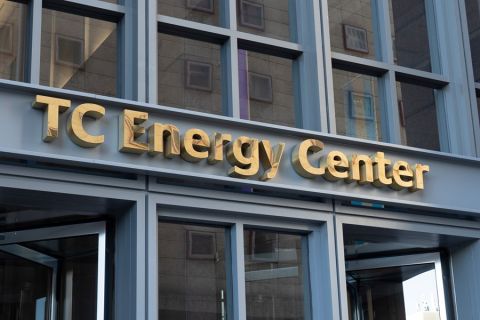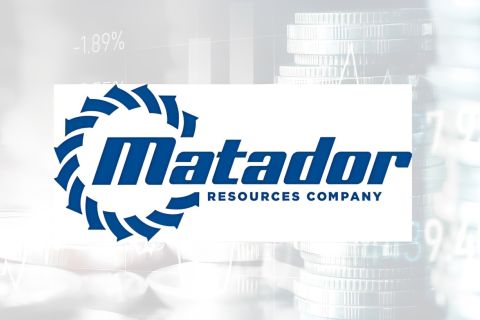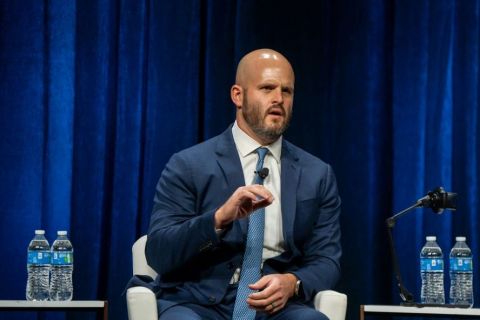Plunging to depths no man has visited, underwater pilots in the Gulf of Mexico put oil and gas operations on the sea floor.
Sonsub set depth records and conquered technological hurdles working on TotalFinaElf's Canyon Express project. During the job, the schedule changed drastically, and the company had to choreograph simultaneous operations with up to six remotely operated vehicles (ROVs) working for as long as a year on different installations.
That was the company's toughest job and greatest accomplishment to date. "Not too many people appreciate what we did and what we overcame," said Robert Keith, senior vice president, operations and commercial. BP operations managers apparently are among those that appreciate the work. The Canyon Express job helped the company get a contract to supply ROVs, tooling and operators for the Thunder Horse, Mad Dog and Holstein deepwater developments in the Gulf of Mexico.
When a riser on a deepwater well parted at 2,700 ft (824 m) offshore Indonesia, no one sent a human down to make the fix. The job went to an Oceaneering International Inc. remotely operated vehicle (ROV) and a crew that handled the fix from the control cabin in the Ocean Baroness.
Only the standing drill pipe kept the lower segment of the riser from falling. In three days, a 10-person international team of experts designed, built and tested a clamp to hook the top and bottom of the riser together to recover the 700,000-lb lower section.
That meant the internationally assembled ROV crew had to write specifications on a tool that had never been built. Next, ROV operators had develop an ultrahigh-torque tool to unhook the lower marine riser at the seafloor blowout preventer (BOP) to recover the full riser. That was the company's toughest oil and gas industry job because of time constraints and the potential for a complete loss of the riser.
"Deep sea production couldn't work today without ROVs, and it can't work in the future without them," said Richard Frisbie, senior vice president of deepwater technology at Oceaneering.
Providers of deepwater ROV services battle pressure, frigid temperatures, technological challenges and marginal profits to move the oil and gas industry into ever-deeper water.
Services range well beyond the laundry list of drilling support, construction, intervention, platform and subsea hookup, pipeline surveys, maintenance, search and recovery and suction piling installation.
Canyon Offshore Inc.'s ROVs were the prime tool in the recovery of the Japanese trawler R/V Ehine Maru off the Hawaii coast in 2,000 ft (610 m) of water, the deepest heavy salvage ever performed. Three Canyon ROV systems surveyed and rigged the unit for retrieval to the surface.
In 2002, Canyon Offshore rescued a person trapped in a manned submersible in 1,800 ft (549 m) of water in the Gulf of Mexico. The submersible was working on an intervention job at a client's well when the tool seized at the site. Canyon sent the MV Merlin with a Triton work class ROV in. It dove to the submersible, released the tool and the submersible within 5 minutes, and the submersible and pilot were recovered a short time later after being trapped for 10 hours.
Oceaneering's toughest non-industry job was a day-long live video show of the Titanic on location at the bottom of the sea. The ROV had to work when the worldwide broadcast went live in a water depth of 12,000 ft (3,660 m), Frisbie said.
An Oceaneering job for Shell saw the first use of fiber optics in the control umbilical. Now, nearly all deepwater ROVs use umbilicals with imbedded fiber optics.
One challenge Sonsub faced and overcame was fiber-optic slip rings that failed at depth and temperature. When the company brought the ROV back above 6,562 ft (2,000 m), the systems came back on line. The slip rings run in a fluid, and the company found that elements of the fluid precipitated out under a combination of low temperature and high pressure and returned to solution when those factors eased.
Service companies helped overcome that problem, Keith said, and they have passed the technology to the rest of the industry.
The struggle to improve the technology is constant. For example, Subsea 7, formed by the combination of DSND Subsea and Halliburton Subsea, is working on technology relating to risers, flow assurance, deepwater installation, remote intervention, sensors and welding and materials as well as improvements in the ROVs themselves, according to Ian Edmonstone, ROV and survey manager, in the company's Houston office.
Edmonstone said one of the most difficult tasks he faced was bringing the international company into the highly competitive Gulf of Mexico market. The company started small in the Gulf of Mexico and built its operations as it climbed the learning curve.
Recently, it has landed awards on three world-class projects, the Nakika umbilical installation and flying leads and the umbilicals for both the Thunder Horse and Atlantis projects.
Internationally, it has one of the world's largest fleets with 112 ROVs, pipeline construction yards, 20 dynamically positioned vessels and some 4,000 employees in every major oil and gas region of the world.
It has built more than 40 high-specification ROV systems, including two that can work in water to 16,400 ft (5,000 m) deep, Edmonstone said, and is a pioneer in intervention tooling.
Oceaneering is the big fish in this pond with 125 of the 400 to 425 active work-class ROVs in the oil and gas industry worldwide.
It has 90% of the drilling support in Gulf of Mexico operations below 3,000 ft (915 m), about 45% of the worldwide deepwater drilling support market and it has ROVs on 29 of the 32 rigs drilling in deep water that have ROVs installed on board, Frisbie said.
Four of its systems can work in water 22,000 ft (6,710 m) deep. It doesn't do as much inspection work as it used to do, preferring active work-type jobs. About 60% of its work is in drilling support and the remainder in other work.
One of its Hydra Millennium ROVs was able to do a plugging and abandonment job on a depleted well, bypassing the need for the same work done by an offshore drilling rig.
Its most advanced ROV is the all-electric Hydra Magnum class, now on the Deepwater Horizon working for BP. All-electric operation makes it more responsive. According to Frisbie, it is 30% to 40% more powerful than previous models with lower maintenance costs.
Among its newer technological advancements, it can include a Hydra Minimum inspection-class ROV in the same cage with a work-class ROV with both sharing the same umbilical. The company has six Minimums. With this patented combination, the company guarantees 100% visual capability, even if the work-class ROV should run into trouble.
Not only that, Frisbie said, "We have saved companies well over $1 million each because the Minimum was small enough to get in and see a small leak inside a BOP structure."
Thales Geosolutions has made its own ROVs since it manufactured the Sea Lion in the early 1990s. Now a worldwide company, it has more than 60 ROVs with horsepower ratings from 25 to 200, according to Denzel Reed, manager of the ROV division.
Some 85% of its work comes from oil and gas operators, and the remainder comes from offshore contractors. It works in everything from inspection, maintenance and repair to well intervention and construction, he added.
Canyon Offshore operates an internationally deployed fleet of more than 20 work class ROV and trenching systems on its own and another eight systems for clients. Horsepower ranges from 20 to a high of 750 on the new T-750 Supertrencher for deepwater flowline burial. The company also supplies ROV systems on all of Cal Dive's dynamically positioned construction vessels.
Among the ROVs Canyon operates is the new-generation Quest electric ROV that is rated for water depths of 10,000 ft (3,050 m), the Triton XL work class and the more compact Triton ST work class designed for use on an offshore rig or platform, the higher horsepower Venom work class, the Scorpio and Scorpion work class ROVs and Manta observation-class ROVs. The company recently signed a 3-year agreement with Technip Offshore to proved ROV and vessel services in the Gulf of Mexico, North Sea and Southeast Asia. It also signed a 30-year ROV trenching services agreement with CSO Norge in Norway. Canyon Offshore also just bought three new Triton XLSS systems from Perry Slingsby with the latest in deepwater technology and capability.
Not all of the ROVs in the Gulf of Mexico are in big fleet operations. Technip Coflexip's Remote Systems Unit has two of its Triton multi-role vehicles (TMRV) on the Deep Blue deepwater pipelay vessel. The Perry Slingsby division produces the ROVs. They can work in 9,843 ft (3,000 m) of water. It has 100 hp in both the ROV and the garage, enabling to garage to help extend the tether range, said Doug Rutledge, RSU integration engineer.
Two more of the new ROVs may come to the Gulf of Mexico on the company's Deep Pioneer, if it comes to North America after finishing its work offshore West Africa.
The TMRVs are the first vessels built after Perry and Slingsby joined forces. The new ROV is built with a lot of standard flotation to carry plenty of tools.
Sonsub used Perry ROVs before it started building its own Triton XL class ROVs. Since then, it has built and sold 38 of the new vehicles, Keith said. Its Innovator handles water depths to 9,843 ft (3,000 m) and has worked at 9,646 ft (2,940 m) to set a record working for Unocal on the Discovery Spirit.
Records are frequent in the ROV industry as the service companies continue to look toward industry needs for the future.
"Except for a nuclear submarine, this is probably the most sophisticated piece of equipment put under water," Frisbie said, although the company's new AUVs are pushing past that technology standard. And the future holds even more capability. In this part of the industry, the oil and gas operators aren't necessarily pullers of technology. "Generally, we have capabilities the oil companies don't know about. They rarely push us. We push them to use the technology that's available now," he said.
Oceaneering can give onshore personnel real-time video on some of its systems. An ROV can drop to a deep-sea site and send a video picture of a problem area to onshore experts for analysis.
Training and preparation represent another area ripe for improvement. The company has the industry's only ROV training schools, including a full-scale hydraulic laboratory and three full-fidelity, dynamically based "flight" simulators.
With the simulators, trainees can experience an ROV's full operational performance. They can practice collision avoidance, practice complex connection tasks in any visibility condition and cope with surface motion.
In the future, the company plans to model tasks on the simulator so the crews can practice with design and installation engineers or other teams well before the crews drop the ROV in the water and perform a real, complex, high-cost, deepwater operation. They can prepare for potential problems before the ROV gets wet. Statoil already is testing the system, and Oceaneering is talking with Shell, Frisbie said.
That beats the old apprenticeship system in which the tyro sat beside the old hand learning the trade job by job and only rarely getting a shot at the tough tasks.
Sonsub's goal is to meet the client requirement for 100% reliability for complex technology in the harshest conditions, Keith said. That means training people to avoid human mistakes and digging into the reasons for failures until the failure is eliminated.
Coming generations of ROVs will be smaller, but they will retain the capabilities of present-day machines. Customers wanted more and more horsepower, and that led to bigger machines. The ROVs became more difficult to transport. "Pound-for-horsepower and pound-per-cubic-foot, they got too expensive," he added.
At Subsea 7, Edmonstone sees the industry moving toward increased multitasking capability. "We currently have capabilities of multi-tasking ROVs, however I see that the drive will be for more and more time in water prior to recovery and that whilst in water, we will need to be able to perform a multitude of different task. It takes a long time to round trip to 10,000 ft (3,050 m)," he said.
Doug Stroud, corporate vice president for sales at Canyon Offshore, also sees the market moving toward integrated services. "Operators want the ROV contractor to provide the vessel, survey, tooling and third-party materials for every subsea project," he said.
John Edwards, president and co-founder of Canyon Offshore added, "A key portion of the success of Canyon has been our historical performance in the hard construction projects as well as 'out of the box' thinking for tough, new challenges, such as the Bluestream Survey in 6,562 ft (2,000 m) of water and the challenging salvage of the Ehine Maru."
In the future, Thales Geosolutions' Reed sees ROV contractors moving toward the area of prime contracts rather than providers of ROV systems and crews. Oil and gas companies expect services that encompass a complete project.
The flexibility and early assumption of higher technology is a clear indicator of the competitiveness of this industry. "We don't feel there is anything out there that we cannot provide to our customer base," Reed said.
In the face of present and approaching technology, ROV service operations will remain a highly competitive market. "We all struggle to gain the rates that we should be attaining for such high-tech equipment and professional staff. This is typically due to willingness to accept low rates and also supply and demand; a lull in operators spending budgets never helps this," Edmonstone said.
It's not all bad. Charles Royce, vice president of sales and marketing with Oceaneering, said the industry is more competitive than ever. The highs and lows don't swing as wide as they do for oil and gas exploration and production companies, but the swing still is about 55% to 60% of the level operators feel.
"The ROV industry is its own worst enemy. We try to take jobs from each other," Keith said. That leads to reduced margin, and it lowers the capital available to develop products.
Looking at the future, he said, "I just hope the ROV industry gets more credibility and respect for our accomplishments. None of this stuff in deep water would be possible without us. Many clients just remember when we broke down, not when we accomplished something fantastic or cured problems for one of their engineers."
Recommended Reading
TC Energy Appoints Sean O’Donnell as Executive VP, CFO
2024-04-03 - Prior to joining TC Energy, O’Donnell worked with Quantum Capital Group for 13 years as an operating partner and served on the firm’s investment committee.
JMR Services, A-Plus P&A to Merge Companies
2024-03-05 - The combined organization will operate under JMR Services and aims to become the largest pure-play plug and abandonment company in the nation.
Matador Stock Offering to Pay for New Permian A&D—Analyst
2024-03-26 - Matador Resources is offering more than 5 million shares of stock for proceeds of $347 million to pay for newly disclosed transactions in Texas and New Mexico.
ProPetro Reports Material Weakness in Financial Reporting Controls
2024-03-14 - ProPetro identified a material weakness in internal controls over financial reporting, the oilfield services firm said in a filing.
OGInterview: Building EIV Capital’s Midstream Investment Strategy
2024-05-01 - Midstream-focused EIV Capital has added non-operated assets and transition projects to its portfolio as a sign of the times.





